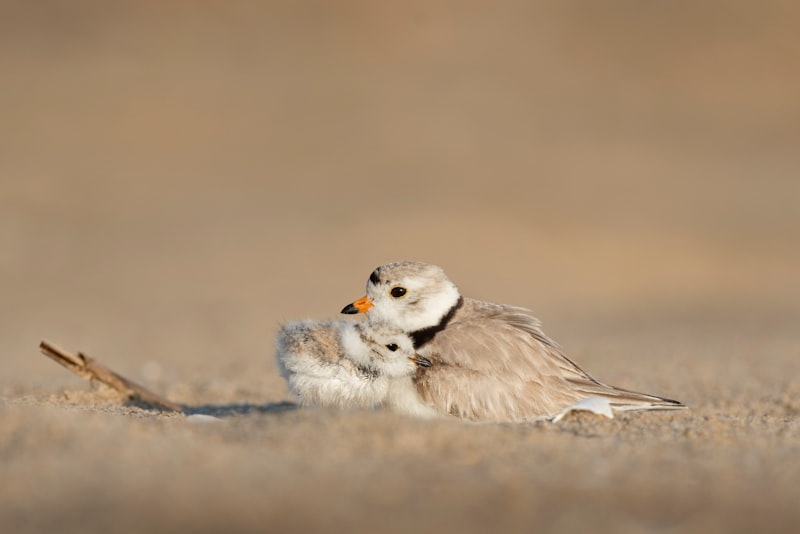
Have you ever wondered about the fascinating instincts and intuitions of animals? These innate abilities often leave us in awe of their remarkable senses and behaviors. Animals possess a deep-rooted connection to their surroundings, relying on instincts honed through centuries of evolution. From the keen sense of smell in wolves that allows them to track prey over vast distances, to the incredible navigation skills of migratory birds that guide them across continents, nature has endowed animals with extraordinary gifts.
Consider the honeybee, a tiny creature with a complex social structure and an exceptional ability to communicate through intricate dances. These dances convey precise information about food sources, guiding fellow bees to locations rich in nectar and pollen. It’s a marvel of communication and cooperation, showcasing how even the smallest creatures can exhibit profound intelligence.
Intuition also plays a significant role in animal behavior. Dogs, known for their loyalty and sensitivity, often seem to anticipate their owner’s needs or emotions. Whether it’s a comforting presence during tough times or an uncanny ability to detect danger, dogs demonstrate an intuitive bond with humans that goes beyond simple training.
Marine animals like dolphins exhibit remarkable problem-solving skills and social behaviors that hint at a level of intelligence comparable to some primates. Their ability to use tools, communicate through complex sounds, and navigate intricate social structures underscores the depth of their cognitive abilities.
In the wild, survival often hinges on quick decisions based on instinct. Animals like cheetahs rely on their speed and agility to hunt prey, while prey species like gazelles depend on acute senses to detect predators before they strike. These instincts are finely tuned over generations, ensuring the continuation of species in challenging environments.
Inside the Minds of Animals: Exploring Curious Instincts and Intuitions
Take the majestic eagle, for instance. Known for its keen eyesight and soaring flights, the eagle’s ability to spot prey from great heights is not just a product of sharp vision but also of instinctive hunting prowess. It’s as if each dive is orchestrated with precise calculations, a testament to both instinct and experience.
Then there are the social animals like wolves, whose pack dynamics reveal a complex web of hierarchy and cooperation. From alpha leaders to nurturing caregivers, every role is defined not just by strength but by a deep-rooted sense of social instinct, ensuring the pack’s survival and cohesion in the wild.
On the other end of the spectrum, consider the tiny leafcutter ants. These diligent insects navigate vast distances while carrying leaf fragments many times their size, guided by a collective intelligence that rivals some human societies. Their intricate trails and efficient teamwork showcase an intuitive understanding of task delegation and resource management, all driven by a shared instinct for colony success.
Animals’ instincts often manifest in surprising ways, such as the homing instinct of migratory birds, capable of navigating thousands of miles across oceans and continents with pinpoint accuracy. What seems like a simple journey is, in fact, a testament to a profound sense of direction and an innate ability to read celestial cues and magnetic fields.
The Secret Signals: How Animals Use Instincts and Intuitions to Navigate
Have you ever wondered how animals seem to effortlessly navigate their surroundings, even in the most unfamiliar terrain? It’s more than just instinct; it’s a fascinating display of their innate abilities to interpret subtle signals and cues from their environment.
Animals, from tiny insects to majestic mammals, rely on a complex web of instincts and intuitions to navigate and survive. These abilities go beyond mere sensory perception; they involve finely tuned mechanisms that help them respond to changes in their surroundings with remarkable precision.
Take the example of migratory birds. Each year, they embark on incredible journeys spanning thousands of miles, often navigating without the aid of maps or GPS. How do they do it? Scientists believe that these birds possess a magnetic compass in their brains, allowing them to sense the Earth’s magnetic field and orient themselves accordingly. This innate ability guides them across continents, ensuring they reach their seasonal destinations with astonishing accuracy.
Similarly, marine animals like sea turtles exhibit remarkable navigation skills during their long migrations across oceans. They utilize Earth’s magnetic field as well as celestial cues, such as the position of the sun and stars, to navigate vast expanses of water. This intuitive sense of direction enables them to return to the exact beaches where they were born, years after years.
Even smaller creatures, like ants, demonstrate impressive navigational prowess. They leave scent trails that communicate important information to other members of their colony, such as the location of food sources or potential threats. This communal use of instinctual signals ensures the survival and prosperity of their entire community.
In the animal kingdom, navigation isn’t just a survival skill; it’s an intricate dance of instincts and intuitions honed over millions of years of evolution. These secret signals underscore the remarkable adaptability and resilience of wildlife in diverse environments, showcasing nature’s unparalleled ability to solve complex challenges through innate wisdom.
This article highlights how animals rely on instinctual signals and intuitions to navigate their environments, drawing readers into the fascinating world of animal behavior and survival strategies.
Unveiling the Mystery: Animal Intuitions Decoded Through Science
Have you ever wondered how animals seem to predict natural disasters or sense danger before it strikes? These mysterious abilities often attributed to intuition have intrigued scientists for decades. Recent research has shed light on these phenomena, revealing fascinating insights into the animal kingdom’s hidden senses.
One remarkable example is animals’ ability to detect earthquakes before they occur. Studies have shown that certain species exhibit unusual behaviors such as fleeing or becoming restless days or even weeks before an earthquake hits. Scientists believe that animals may sense changes in the Earth’s magnetic field or pick up subtle vibrations that precede seismic activity. This sensitivity could be attributed to their acute sensory perception, allowing them to perceive environmental changes imperceptible to humans.
Another intriguing aspect is animals’ uncanny ability to navigate over vast distances during migration. From monarch butterflies to Arctic terns, many species undertake epic journeys across continents and oceans with pinpoint accuracy. Researchers have discovered that these migratory feats are guided by a combination of celestial cues, Earth’s magnetic field, and even landmarks. This intricate navigation system enables animals to navigate complex routes without getting lost, showcasing their remarkable instinctual intelligence.
Furthermore, studies on animal communication have unveiled complex social dynamics and emotional expressions among various species. From primates using different vocalizations to convey specific messages to whales’ haunting songs that travel for miles underwater, animals communicate in nuanced ways that reflect their social structures and emotions. These forms of communication not only facilitate cooperation and warning signals but also enhance their chances of survival in the wild.
From Survival to Sensing Danger: The Evolution of Animal Instincts
Imagine a world where every movement, every noise carries significance beyond mere existence. Animals, through their instincts, have transformed survival into a sophisticated art of sensing danger. Take, for instance, the eagle soaring high above the rugged terrain. Its keen eyesight isn’t just for spotting prey; it’s a radar for potential danger, whether from lurking predators or changing weather patterns. This ability to perceive threats ensures its survival in the competitive realm of the wild.
Similarly, the stealth of a hunting cat isn’t just about speed and agility—it’s a testament to sensory acuity. Every twitch of a muscle, every flicker of an ear, finely attuned to the slightest disturbance in its surroundings. This heightened awareness isn’t just reactionary; it’s proactive, anticipating danger before it materializes.
From the depths of the ocean to the vast savannas, instincts have sculpted behaviors that defy simple explanation. The migration of monarch butterflies across continents, guided by an internal compass attuned to the Earth’s magnetic field, is a testament to instinctual navigation perfected through generations. It’s not just about flying; it’s about precision navigation, ensuring they reach their destination despite immense obstacles.
In essence, animal instincts encapsulate the essence of survival through an extraordinary lens of sensing danger. It’s not merely reacting to stimuli but interpreting signals with a foresight that spans beyond immediate threats. Evolution has woven these instincts into the fabric of existence, each species contributing a unique thread to the tapestry of life.

As we unravel the mysteries of animal instincts, we uncover profound insights into the resilience and adaptability of life itself. From survival instincts to the nuanced ability to sense danger, animals exemplify a continuum of evolution where every adaptation tells a story of triumph against adversity.
Animal Whispers: The Surprising Ways Instincts Shape Behavior
Have you ever wondered why animals behave the way they do? It’s more than just random actions; instincts play a pivotal role in shaping their behavior. From the majestic lion to the tiny ant, instincts guide their every move, often in ways that surprise us.
Take the example of migration in birds. Every year, without fail, millions of birds embark on incredible journeys spanning thousands of miles. How do they know where to go? It’s instinct at work. Their internal compasses, honed over generations, guide them across continents, ensuring they reach their destinations safely.
Instincts also dictate how animals interact with their environment. Predators like cheetahs are finely tuned hunting machines. Their instinctive ability to stalk prey, judge distance, and execute precise maneuvers ensures they can catch food efficiently. It’s like watching a skilled athlete in action, every move calculated for maximum effectiveness.
But it’s not just about survival; instincts also shape social behaviors. Take bees, for instance. In a beehive, every bee has a role dictated by instinct. The queen bee lays eggs, worker bees gather pollen, and drones protect the hive. This intricate social structure isn’t taught but is instinctively understood and followed by each member of the colony.
Even pets exhibit instincts deeply rooted in their wild ancestors. Dogs, descended from wolves, have retained instincts like pack mentality and territorial behavior. That’s why your dog might bark to protect your home or show submission to assert dominance. These behaviors, seemingly simple, are actually manifestations of complex instinctual programming.
Instincts are nature’s way of ensuring survival and efficiency across species. They’re like silent whispers guiding animals through life’s challenges, helping them adapt and thrive in diverse environments. So, the next time you observe an animal in action, remember, behind every move lies a deep-rooted instinct shaping their behavior.
Frequently Asked Questions
How do scientists study and understand animal instincts and intuitions?
Learn how scientists study and understand animal instincts and intuitions through rigorous observation, behavioral experiments, and neurobiological research. By observing natural behaviors and conducting controlled experiments, researchers uncover the mechanisms behind animal instincts and intuitive behaviors, shedding light on their evolutionary origins and adaptive significance.
What are examples of extraordinary animal instincts?
Discover fascinating examples of extraordinary animal instincts, showcasing nature’s incredible adaptations for survival. From the navigation prowess of migratory birds to the intricate communication among ants in colonies, these instincts highlight the diverse ways animals adapt to their environments and ensure their species’ continuation.
Can animal instincts be learned or are they innate?
This FAQ explores whether animal instincts are learned or innate. It discusses the debate over whether these behaviors are primarily genetic or acquired through experience and learning.
What are animal instincts and how do they work?
Animal instincts are innate behaviors that animals are born with, guiding their actions and responses to environmental stimuli. They develop through evolution and enable survival and reproduction. Instincts are automatic and require no learning, helping animals navigate challenges such as finding food, avoiding danger, and reproducing.
How do animals use intuition in their daily lives?
Learn how animals rely on intuition to navigate their surroundings, make decisions, and respond to threats or opportunities in their daily lives.


